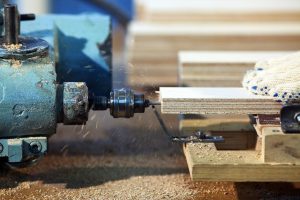MDO and HDO Plywood
Medium-density overlay (MDO) and High-Density Overlay (HDO) Plywood (also called signboard) are engineered wood panels originally designed for sign makers. However, they are gaining popularity for other purposes. Cabinetmakers are beginning to see and use the engineered woods’ value. They are also excellent products for jigs and cement forms.
Surfaces

MDO and HDO are hardwood plywood with resin-soaked fiber overlays between the veneer layers and on both surfaces. The top veneer layer on both sides is “A” grade, providing an exceptionally smooth surface, without voids, to apply the fiber overlay. The resin-soaked fiber overlays are used with heat and pressure, forming an extremely strong, flat, and highly smooth engineered wood product that is waterproof. The only differences between the two products are that the density of the exterior fiber layer on the HDO is considerably higher than that of MDO, and it is manufactured with higher resin content.
Thickness
MDO and HDO are both available in a variety of thicknesses, including 3/8″, 1/2″, 5/8″, 3/4″, and 1″. Standard sheet sizes include two and 4-foot widths and lengths of 8′, 10′, and 12′.
Painting
When used for cabinetmaking, MDO panels provide an excellent, flat surface that accepts paint well. The resin impregnated fiber layer adheres well to paint and eliminates the need for priming. Unlike many other materials, cut edges are still highly water resistant, with the added benefit of being easily painted, fully sealing the edges against water.
Application and cost
HDO plywood was created to make highway signs with reflective material attached to the sign’s surface. To make a more durable sign, it was decided that a more robust resin layer was needed to provide a better feeling for attaching the reflective material. These materials are not as commonly available as softwood plywood. Consumer building supply centers usually will not carry them, but lumberyards that cater to professions probably will. MDO plywood costs about half the price of Marine plywood or about twice that of softwood plywood; HDO is slightly higher.
Because of the thin veneer layers alternated with the resin-impregnated fiber layers and more significant weight, MDO and HDO have proven to be excellent machining materials. Routed edges are extremely stable, without splintering and splitting. However, these materials are hard on saw and router blades due to the high fiber and resin content. You should definitively use carbide tipped bits and blades; otherwise, expect to resharpen them more often than with other engineered wood products.
Both MDO and HDO plywood has gained wide popularity for making concrete forms. MDO plywood functions well for one-time cases where a special form that won’t be reused is needed. However, for standard forms to be reused, the extra expense of HDO will provide for a much longer-lasting concrete form.




